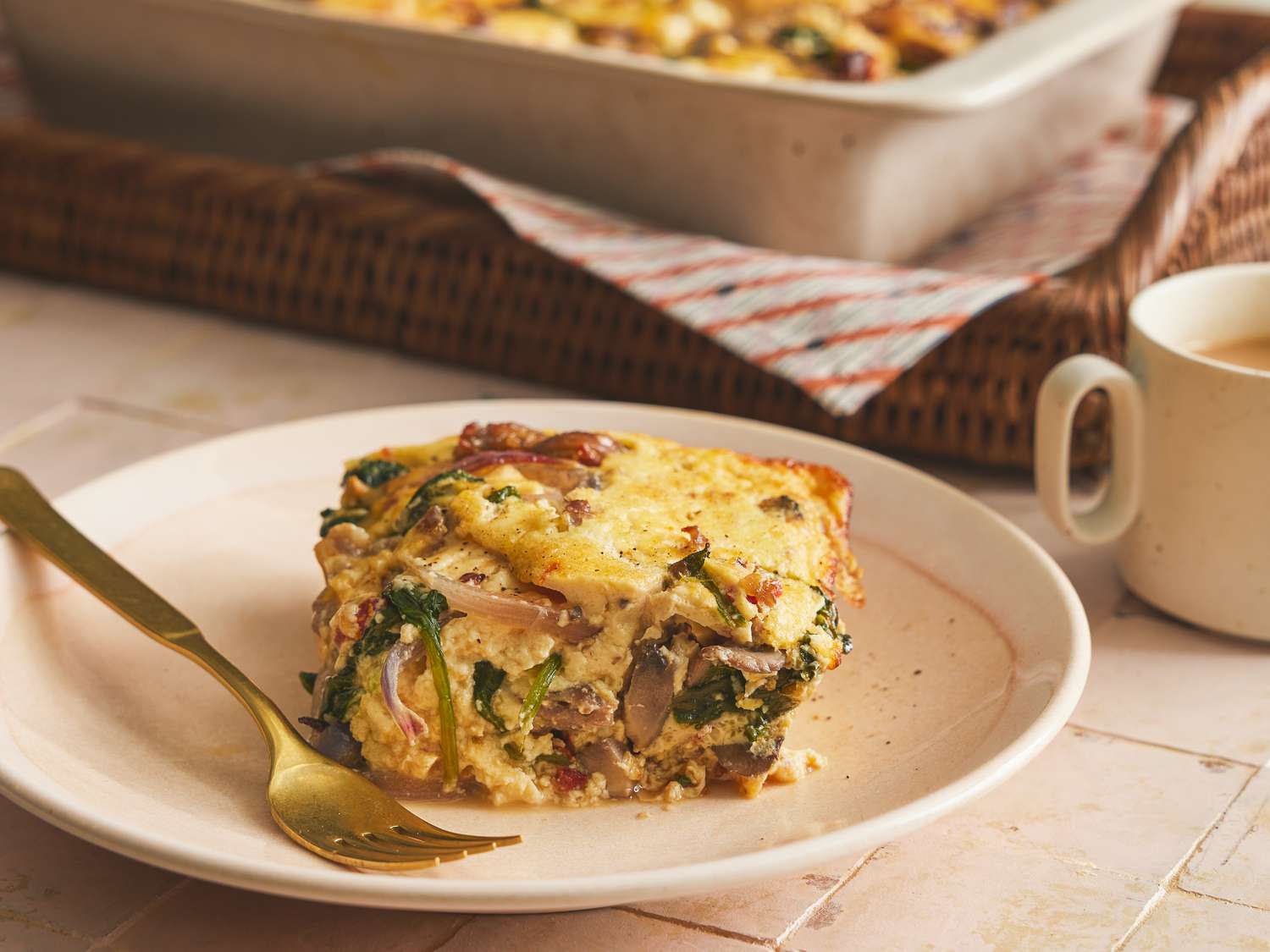
[ad_1]

Why It Works
- Sautéeing the sausage and vegetables before adding them to the casserole ensures they’re fully cooked and removes excess moisture.
- Adding shredded Gouda cheese, sour cream, and half-in-half to the eggs creates a rich custard-like filling.
Savory, hearty, and packed with flavor, a well-made breakfast casserole is great for feeding a crowd. The ideal breakfast casserole should be creamy and packed with flavorful add-ins, and easy to slice into neat portions. Unfortunately, I have had some seriously bad egg casseroles in my past—ones that are so overcooked and rubbery, you could fling them across the room like a frisbee. That’s why I appreciate a really good recipe for breakfast casserole, like this one from our Birmingham-based test kitchen colleague Elizabeth Mervosh.
Mervosh baked up countless casseroles to created this flavorful egg, vegetable, cheese, and sausage version that’s sure to impress everyone at your next family gathering or brunch. She gussies up her casserole with a thoughtful combination of ingredients like Italian sausage, earthy mushrooms, bright sun-dried tomatoes, garlic, onion, and heaps of fresh spinach. It’s all folded with shredded melty cheese (Gouda or cheddar) before being combined with the eggs and baked.
The casserole is easy to make and can be prepared ahead of time, so you don’t have to wake up at the break of dawn just to get breakfast on the table. Here are a few tips for a savory breakfast casserole that’s extremely satisfying, not soggy, greasy, or underseasoned.
Serious Eats / Fred Hardy
4 Important Steps to Guarantee a Great Savory Breakfast Casserole
1. Pre-cook the sausage and vegetables. Eggs cook quickly—far too fast for fillings to do much beyond warm up a bit by the time the eggs are fully cooked. So the key to a great sausage- and vegetable-loaded egg casserole is to cook your fillings beforehand. We start by cooking the sausage, then set it aside before sautéeing the mushrooms and onions in the rendered sausage fat—this fat and and the fond left behind in the skillet from the sausage imbue the mushrooms and onions with porky, salty flavor. The other aromatics and vegetables, including sun-dried tomatoes, garlic, and fresh spinach, are added after the mushrooms and onions. Sautéing the sausage and vegetables not only makes them tender and helps them develop a robust flavor, but cooking the fillings drives off excess moisture, ensuring a creamy— not watery—casserole.
2. Load up on the dairy. It can be challenging to ensure baked eggs in a large casserole dish are evenly cooked from edge to edge. The eggs can easily overcook and turn rubbery. To ensure the eggs remain tender once baked, we whisked a hearty amount of half-and-half (or whole milk, if you prefer) and sour cream into the egg mixture until fully combined. The added fat from the dairy results in a creamier custard-like filling.
3. Make it easier by building it right in the casserole dish. We wanted to make this casserole as easy as possible to prepare without sacrificing flavor. That’s why we don’t skip sautéing the add-ins as described above—the time savings are just not worth it. But one shortcut we do encourage is skipping the mixing bowl and simply combining all the casserole ingredients directly in the baking dish so there’s one less bowl to clean up.
4. Customize it. This egg casserole is easily adaptable, so feel free to try out your favorite add-ins or swaps. You can omit the pork sausage entirely or swap it for turkey or veggie sausage. Any cheese that shreds and melts easily, such as Gruyère or Monterey Jack, will also work well here. Kale can be swapped in for the spinach and tomatoes can be added as well (just be sure to cook these ingredients first to remove excess moisture, just like you would with the spinach). To make it heartier, fold in some roasted potatoes, sweet potatoes, or root vegetables. (Leftover cooked vegetables work well too.) Get creative and remember that beyond breakfast this savory egg dish also makes a wonderful lunch or dinner.
The recipe was developed by Elizabeth Mervosh; the headnote was written by Leah Colins.
[ad_2]